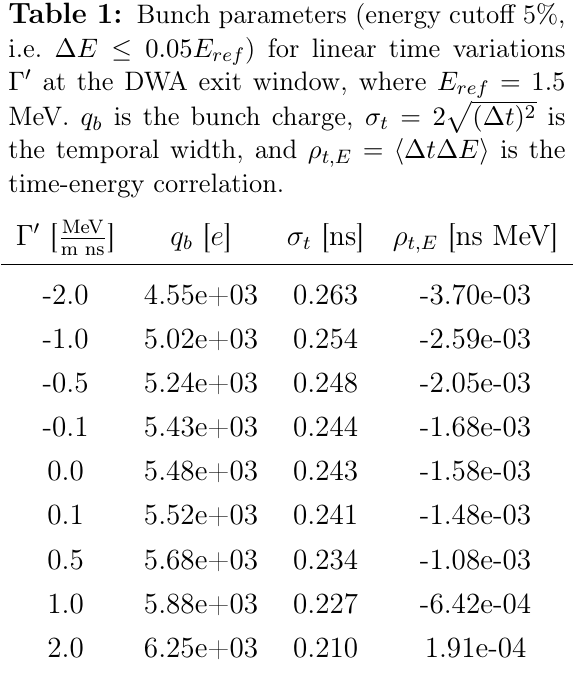For all Γ', acceleration up to the final reference energy of the DWA segment (1.5 MeV) was demonstrated. However, significant differences were observed in the phase space distributions, especially in the vicinity of the reference trajectory. We define the outer boundary of this region as a maximum allowed energy deviation from the reference energy, i.e. an energy cutoff. As this boundary is not clearly defined, energy cutoffs between 0.5% and 10% were considered. The following trends were visible for all applied cutoffs, with the effects larger for stricter cutoffs.
Compared to the baseline (Γ'=0), a Γ'>0 led to higher bunch charge, reduced temporal width, and a weaker (less negative) correlation between deviations in particle arrival time and energy. For Γ'<0, the trends were inverted. In both cases, the effects increased with the magnitude of Γ'. See Table 1.

Conceptually, for Γ'>0, particles that arrive later than the reference particle at a given point experience a larger field, while those that arrive earlier experience a weaker field. Due to the linear variation, the larger the temporal deviation, the stronger this corrective force. As a result, a set of stable orbits is established about the reference trajectory in time-energy (i.e. longitudinal) phase space. For Γ'<0, existing deviations are exacerbated rather than diminished. The resulting divergence in time-energy space leads to fewer accelerated particles, increased temporal width, and a stronger time-energy correlation.